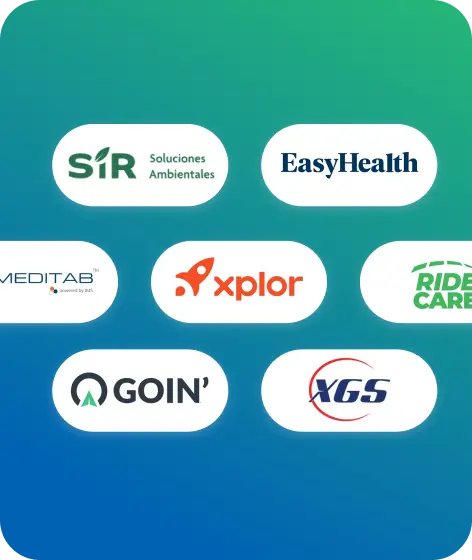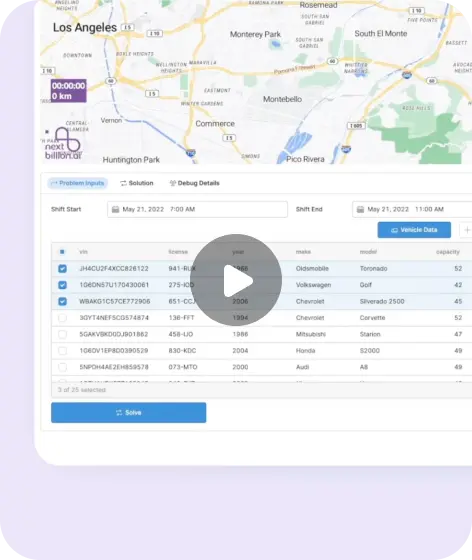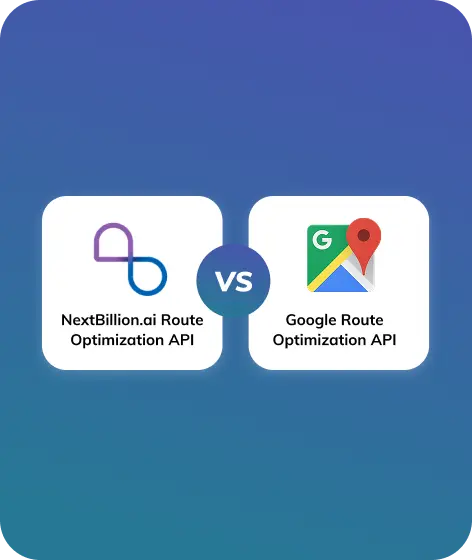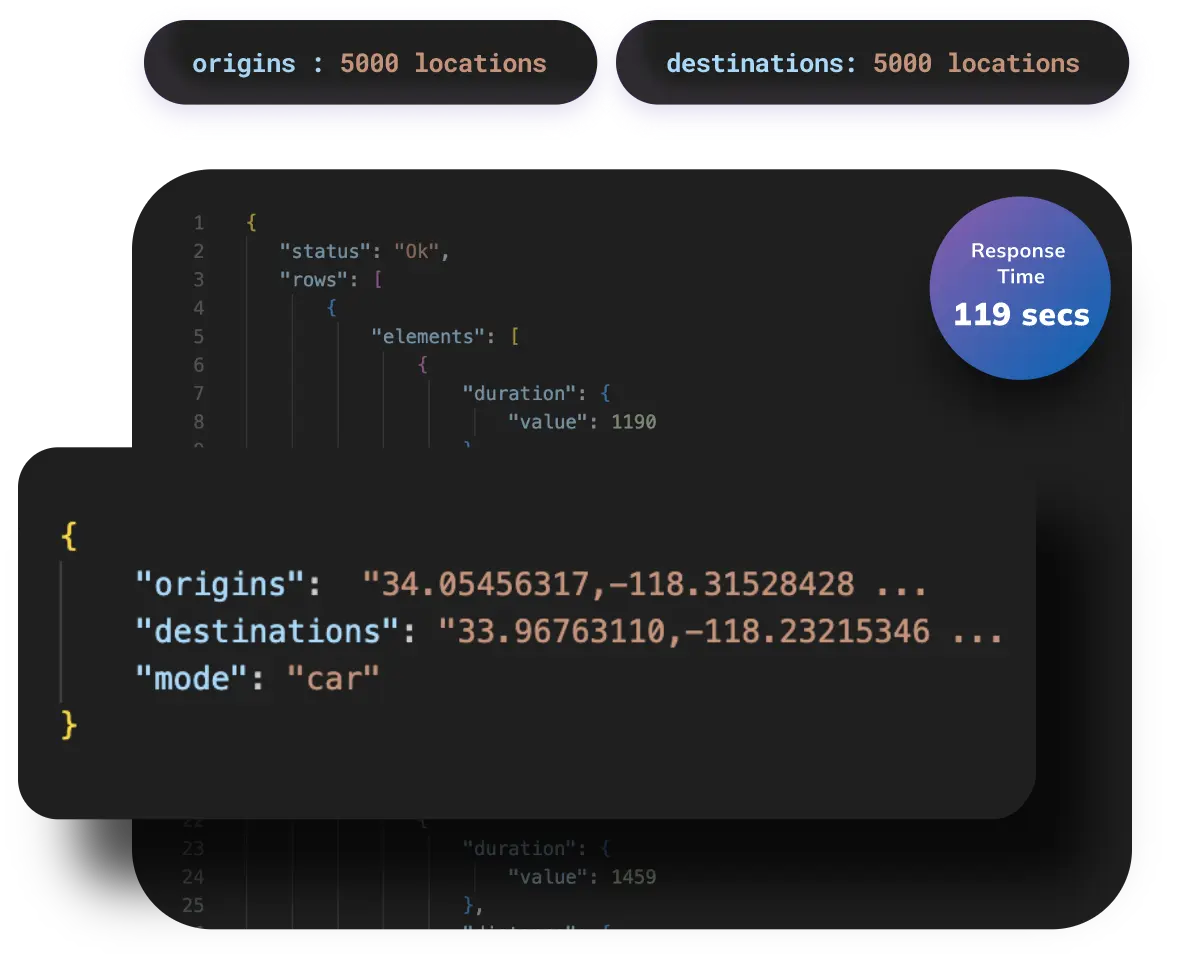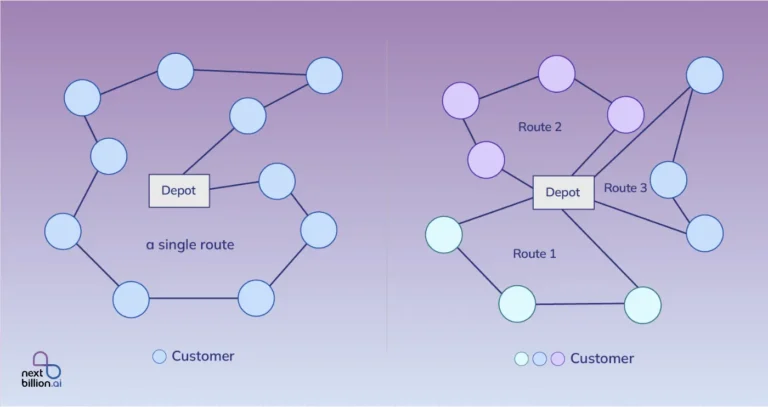
Table of Contents
Effective logistics and supply chain management begins with implementing optimal distribution center processes and best practices. Serving as a specialized warehouse and a hub to store, pack and distribute goods to various destinations, companies look for the most-effective and economical ways to execute tasks. From conventional warehouses to new-age distribution centers, there are a number of technological advancements that have changed the face of the market.
Distribution centers are built and organized in a strategic way so as to manage and coordinate a large number of fleets, drivers, fuel and other operational tasks.
What are the benefits of running a distribution center? What are their benefits and what could possibly be the downside to it? How can you make it work optimally for you?
Read on to understand the nuances of distribution centers and how you can streamline processes.

What is a Distribution Center?
Let’s talk about what exactly a distribution center is.
Distribution centers are high-efficiency warehouses designed for quick product delivery. Unlike traditional warehouses, they focus on quick turnover rather than long-term storage. This also means that these centers focus on quick and efficient processes.
The primary functions of a distribution center are:
- Receiving shipments either from suppliers or manufacturers
- Storing products for a short period, until they are ready to be dispatched
- Processing these orders by sorting and packing them
- Preparing orders to be shipped to customers
Usually, third-party logistics providers (3PLs) operate these facilities, serving multiple businesses to maximize efficiency and reduce costs. This allows companies to leverage specialized logistics expertise without investing in their own distribution infrastructure.
Core Processes in a Distribution Center
A distribution center has many essential functions or processes. This includes everything from receiving and sorting goods, storing and managing, providing order fulfillment services, and coordinating shipping and logistics. Understanding these key components will help you sharpen your business process requirements and choose the right automation support.
Receiving: This is the first of all the other steps. The receiving process is quite crucial and the receiving staff play an important role in inspection during this stage. The goods received should be checked for quality, any damages, quantity and if the specifications match the purchase order.
Sorting: In this process. The received goods are sorted and organized for easy access and retrieval. Depending on the kind of distribution center, the goods are placed in such a way that the following processes are made simpler.
Storing: The sorted goods are stocked in a secure way. This process helps in taking stock of inventory, storing them in strategic order, and making sure that each product category’s special requirement is addressed (for example, perishable goods need a certain temperature to be stored).
Picking or order fulfillment: Once an order is placed, the goods are shipped to the nearest distribution center (to the customer). Here, the goods are packed/boxed, labeled and are ready for delivery.
Shipping or delivery: The last part of the process where the packed goods are picked from the distribution center and delivered to the customer. The importance of this step can never be overlooked. It is vital to ensure quick turnaround times for customers.
Whichever be the industry, the process of dispatch and delivery needs a lot of coordination between the distribution managers and the delivery agents. Here’s where a route optimization API such as Nextbillion’s Route Optimization API steps in and simplifies all the nitty gritties of planning, scheduling, calculating distance and cost, and providing live tracking to give you that extra edge.
Distribution centers also handle restocking or returns and frequent audits. Both require inspection of goods, their quality of returns, and the overall effectiveness of the distribution center processes.
Benefits of Using Distribution Centers
According to a research paper published in 2022, owing to the boom in e-commerce, the number of warehouses globally is expected to touch almost 180,000 by 2025. This definitely applies to specialized distribution centers as well! More and more warehouses are now distribution centers with the spike in deliveries – especially in the ecommerce sector.
Did you know that while there’s a significant increase in the number of distribution centers, there are also apprehensions revolving around it? Yes. High costs, labor shortages and struggle to match the increasing demands are causing concerns in several companies. These downsides that some may see aren’t really of concern when a comprehensive route optimization API is used to optimize tasks.
Let’s first take a look at the benefits of distribution centers that will add value to your business decisions, before we understand the best practices.
Improved Productivity
As we saw, the tasks involved in running a distribution center along with the delivery process can be very laborious and time consuming. Distribution centers today are equipped to
handle large volumes of goods quickly and efficiently. This implies that large quantities of goods can be received and stored with larger facilities.
The use of effective technology such as the route optimization API and related equipment, you can automate the entire process, while monitoring through live-tracking.
Cost Efficiency

Distribution centers offer significant cost advantages, with shipping expenses being the most notable area of savings. This is primarily due to their immense scale of operations. By aggregating shipments from various suppliers and leveraging economies of scale, these centers can substantially reduce transportation costs and secure bulk discounts. Also, through efficient use of storage space and optimal inventory management, distribution centers can minimize inventory holding costs.
Quick Product Delivery

Distribution centers are usually positioned near key transportation nodes in order to enable quicker deliveries. This strategic placement reduces transit times between manufacturers or suppliers and end customers, potentially boosting customer satisfaction and fostering loyalty.
Better Customer Service
Distribution centers play an important role in enhanced customer service. Skilled staff manage the flow of goods, ensuring timely deliveries. By consolidating shipments from various suppliers, these centers help you maintain adequate inventory levels, reducing stockout risks and meeting customer demand more reliably.
Best Practices for Distribution Centers
Imagine a distribution center to be your morning coffee grinding and vending machine. You wouldn’t want anything to go wrong with the machine! To keep the machine in its pink of health you definitely would service it and check for its working condition from time to time. A very close analogy is that of your distribution center. You cannot afford to have any hindrance in processes. Just as how you went from boiling a pot of coffee to upgrading to a machine that makes your morning coffee enjoyable, you need to adopt some best practices to ensure smooth and efficient operation of distribution centers.
Optimized processes help in increased profits, reduced excessive spends, faster delivery, precise coordination and thereby provide a better experience for your customers.
Deploy Route Optimization API
An effective route optimization API, like Nextbillion’s Route optimization API that has comprehensive features including live tracking, is the best option for you to bring a perfect sync into your entire supply chain processes.
Nextbillion’s Route optimization API generates optimal routes to fit your delivery needs, by choosing the closest route. With several deliveries in line and dispatch in different directions, this route optimization API cleverly assigns tasks based on the distance, vehicle, goods and the driver.
Advanced route planning ensures improved efficiency with zone-based allocation, provides support for varied kinds of vehicles, and custom cost depending on the vehicles.
Nextbillion.ai has a host of APIs for all the last-mile delivery requirements:
Route Optimization API: Optimize routes by allocating the best routes to the drivers. This largely cuts the time taken for delivery and most-importantly the fuel cost.
Distance Matrix API: You can get accurate transit ETAs and distances from all origins to destinations without latency and at affordable cost.
Live Tracking API & SDK: You can live-track all your vehicles and receive reliable and accurate activity notifications.
Clustering API: You can group similar data points, plan routes and schedule delivery accordingly.
Isochrone API: NextBillion.ai’s Isochrone API calculates the regions that can be reached within a stipulated time frame from a given location.
Geofencing API: You can assign fleets and drivers in real time by calculating proximity based on time or distance.
Clearly, automating processes not only reduces delegation time, it also drastically improves overall efficiency. Route optimization is crucial in the last mile delivery
Optimize Distribution and Delivery
Handling limitless requests for delivery requires you to automate and optimize processes. Nextbillion’s logistics solutions forecast delivery capacity for future time slots by analyzing current usage. Conduct free simulations with diverse capacity and fleet configurations to optimize your planning.
Opting for a Warehouse Management System (WMS) which is the central nervous system for warehouses and distribution centers, is another best practice. With this you can oversee physical inventory, track product expiration and replenishment needs, pinpoint item locations, and offer numerous other functions. It enables real-time inventory updates through barcode scanning during receiving, allowing pickers immediate access to new stock information. You can minimize human error, enhance picking precision, and provide instant visibility across your entire facility, regardless of its size or layout.
Integrating your WMS with a route optimization API makes it easier for you to track goods, from pick up until delivery. Nextbillion’s route optimization API integrates easily with other applications making it a convenient option for many. You can elevate the capabilities of your existing system with our route optimization APIs extended features.
Implement Best Picking Process
Order picking is the crucial initial stage of order fulfillment and involves retrieving specific products from warehouse inventory to fulfill customer orders. Accurate and efficient picking lays the foundation for customer satisfaction, regardless of the method used.
Picking process is unique to each distribution center. There’s no one way of doing it. Each process has its own benefits and you may need to try and assess which one works best for you.
Single Order Picking
In this method, the warehouse staff navigate the facility to collect goods sequentially, and complete one order at a time. It’s an effective approach for smaller warehouses managing straightforward orders with minimal items per transaction.
Batch Picking
This method streamlines retrieval by collecting goods in bulk for multiple orders simultaneously. It reduces travel time and accelerates fulfillment, particularly useful for warehouses handling numerous orders with overlapping items. Staff utilize a unified pick list to gather the goods for several orders in a single sweep through the facility.
Multi-batch Order Picking
This method quickens item collection by processing multiple orders concurrently. Employees use multi-level carts to gather the goods for several orders in one go. This method is particularly effective for orders sourced from diverse warehouse zones. It significantly reduces overall transit time, as workers complete multiple orders in a single pass through the facility.
Cluster Picking
This method allows for concurrent processing of multiple orders. Staffs collect goods listed on several pick lists and sort them directly into separate containers, each corresponding to a specific order. This method eliminates redundant trips to the same location and negates the need for post-picking sorting.
Wave Picking
This method combines elements of batch and zone picking strategies, useful in large warehouses handling numerous high-volume orders regularly. Orders are categorized into groups or waves based on criteria such as customer proximity, order frequency, type, warehouse zones, shipping dates, and other relevant factors. Waves are strategically allocated to pickers and timetables to optimize operational efficiency.
Zone picking
This method is again a good option for large warehouses with multiple storage areas. The warehouse is divided into zones and workers are assigned to each zone. Workers go through the pick list and retrieve goods stored in their zone. Once all the items in that zone are picked, the order is passed to other zones.
You can choose a process that works for your center – a single mode or even a mix of picking processes.
Optimal Warehouse Design
The layout of your distribution center can make or break your supply chain efficiency. Well-designed facilities ensure a smooth product and personnel flow from receipt to shipment. Like selecting the optimal picking method, perfecting your warehouse layout may require experimentation.
First, place high-turnover items for easy access, and reorganize as needed. Consider seasonal demand fluctuations when placing items, such as prioritizing holiday decorations during peak seasons. Ensure aisles are wide enough to safely accommodate staff, pallets, and equipment. To minimize transport time, locate packing areas close to loading docks. Finally, designate specific staging areas for efficient vehicle loading and unloading. By implementing these strategies, you can create a flexible, efficient warehouse layout that adapts to changing needs and optimizes operations.
Regular Warehouse Audit
Warehouse audits are crucial management tools that allow managers to gauge team performance and pinpoint areas that need improvement. By collecting data during audits, warehouse managers can track key performance metrics over time, such as inventory count accuracy and order fulfillment efficiency.
These assessments serve multiple purposes beyond performance evaluation. They provide opportunities to verify inventory quality, check for expired stock, and ensure adherence to safety protocols. While audits may temporarily slow operations, their long-term benefits in time and cost savings are substantial.
Audits function as a comprehensive safety net for your business. To make this process more effective without disrupting operations, choose to conduct small and manageable sections of audits monthly. This approach allows for continuous improvement and vigilance without the need for large-scale evaluations.
Easy Returns Process
The number of returns are as much or more than new orders. Customers who have had a pleasant return experience are more likely to order more from the same site. Handling returns is a division by itself. Establishing a clear system to handle this entire process evens out a lot of overlapping tasks.
By facilitating hassle-free returns, these operations play a crucial role in enhancing customer satisfaction and fostering brand loyalty. This efficient handling of returns ultimately leads to increased repeat purchase. This also means that a well-managed returns process is not just a cost center, but a powerful driver of long-term revenue growth and customer retention.
Regular Assessments
The dynamic nature of supply chain logistics demands regular evaluation and assessment of warehousing processes. This includes seasonal adjustments, such as reorganizing product placement to accommodate fluctuating demand.
Periodic and ongoing training for staff is crucial for staff to update skills and understand new safety measures. Using Warehouse Management System data is essential for gauging operational efficiency. When you implement these strategies, businesses can drive continuous improvement, boost operational efficiency, and positively impact the bottom line. This approach ensures that warehouse operations remain agile and responsive to changing market dynamics and internal needs.
Automate for Efficiency
Distribution centers are the prime sources of effective delivery. All the best practices are critical to ensure smooth operations of the entire business.
For business leaders, increasing efficiency within their supply chain is their number one priority, with 63% reporting, followed by 59% in reducing costs, according to PwC’s 2024 Digital Trends in Operations Survey.
As the statistics reveal, custom automation should be your choice for productivity and profitability. Automation provides elevated supply chain management experiences and ultimately leads to customer delight.
Nextbillion’s Route Optimization API considers crucial business factors – including vehicle capacity, time constraints, service duration, and staff skills – to enable intelligent task allocation. The system determines the optimal vehicles, personnel, and task sequence for effective matching and dispatch. Last mile delivery is the backbone of supply chain optimization.
After assessing the pros and cons of operating distribution centers, it is evident that prime concern for most businesses is timely delivery and cost effectiveness. How do we make both go hand in hand? If you ask if that’s even possible, it is.
Nexbillion’s Route Optimization API is the answer to managing distribution center management challenges. This tool optimizes delivery routes, effectively tackling both Single and Multi-Vehicle Routing Problems (VRP). By strategically assigning optimal routes for fleets serving multiple destinations, the API adeptly manages various operational constraints such as time windows, vehicle capacity limitations, and fleet availability. The result is a more efficient, cost-effective approach to fleet operations that can significantly enhance overall logistics performance.
Precise routes are allocated for vehicles to deliver at various locations using optimal distances. It ensures timely deliveries while reducing travel time, minimizing vehicle wear, and lowering fuel consumption.
The best part about Nextbillion’s route optimization API is that you can embed this tool into your warehouse management system or integrate it with any other logistic applications easily. You can also customize routes with over fifty constraints to match your business requirements.
“As e-commerce sales continue to grow at over 15% annually, suppliers feel the pressure to deliver a variety of goods in smaller sizes at a faster pace,” a research conducted by Westernacher Consulting explains.
The need to step up is higher now than ever before looking at these statistics.
Simple dispatch processes and real-time tracking add to the credibility of your operational process. Nextbillion’s route optimization API gives you a clear control over all vehicles over all dispatches, across locations.
This API offers comprehensive analytical tools and reporting features with which you can make data-driven decisions. It also allows you to reassess and refine operations, leading to improved performance and reduced costs.
Nextbillion’s Distance Matrix API offers a robust solution for complex logistics planning. Its standout feature is the expansive 5000×5000 matrix capability, providing scalability for route calculations. By integrating real-time traffic data, the API delivers highly accurate Estimated Time of Arrival (ETA) predictions and optimizes routing efficiency.
This tool excels in connecting multiple points of interest crucial to logistics operations, including warehouses, distribution centers, customer locations, and mobile assets like dispatch vehicles. The API’s extensive matrix support allows for flexible and comprehensive planning, accommodating the needs of both small operations and large-scale enterprises.
By offering this level of detail and scope while maintaining cost-effectiveness, Nextbillion’s Distance Matrix API positions itself as a valuable asset for businesses seeking to enhance their logistics planning and execution.
Distribution centers are only increasing by the day with the constant demand for goods/products. Research shows that automation in every possible way is the only way to progress in this industry. For your goods to reach customers through a seamless last mile delivery, consider automation and custom route optimization APIs for optimal operations.
About Author
Rishabh Singh
Rishabh Singh is a Freelance Technical Writer at NextBillion.ai. He specializes in Programming, Data analytics and technical consulting, turning complex tech into clear and engaging content.

